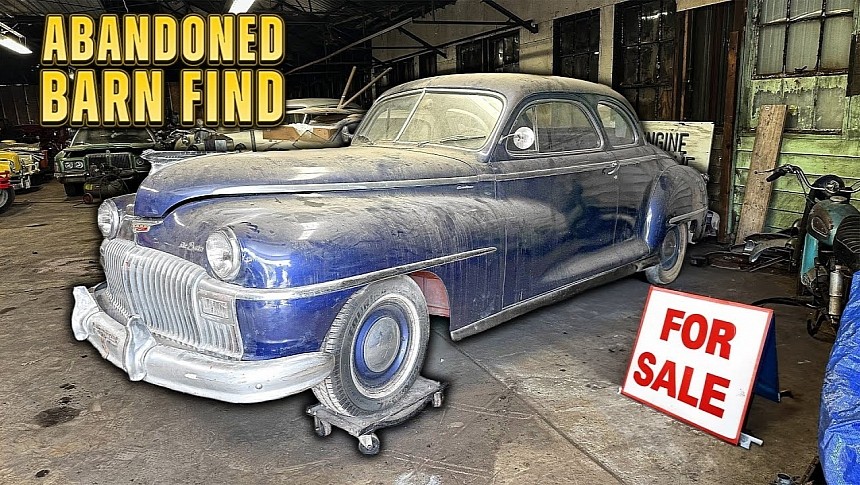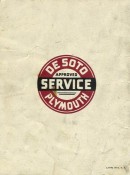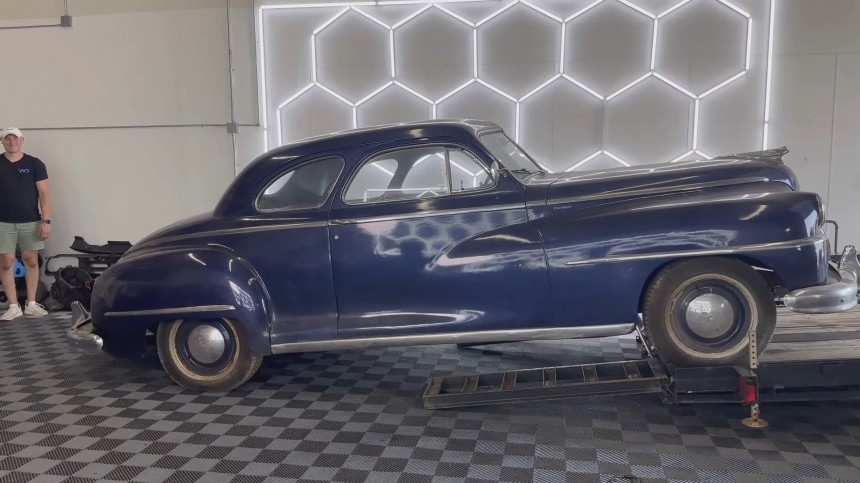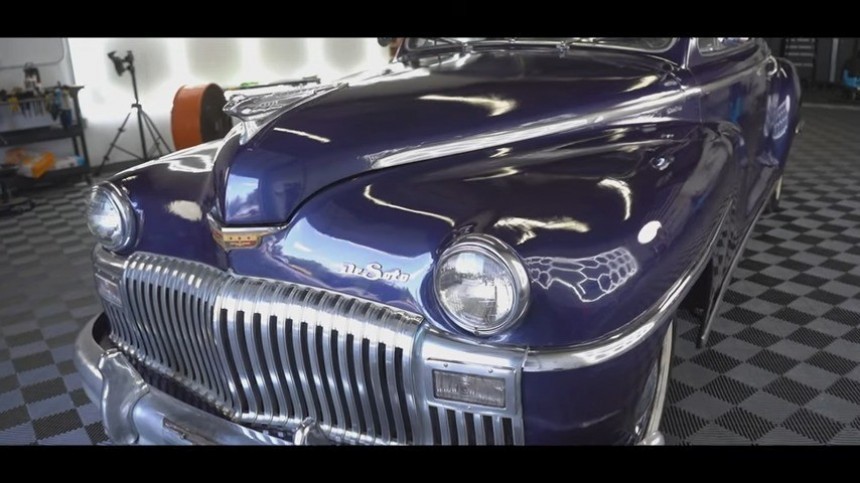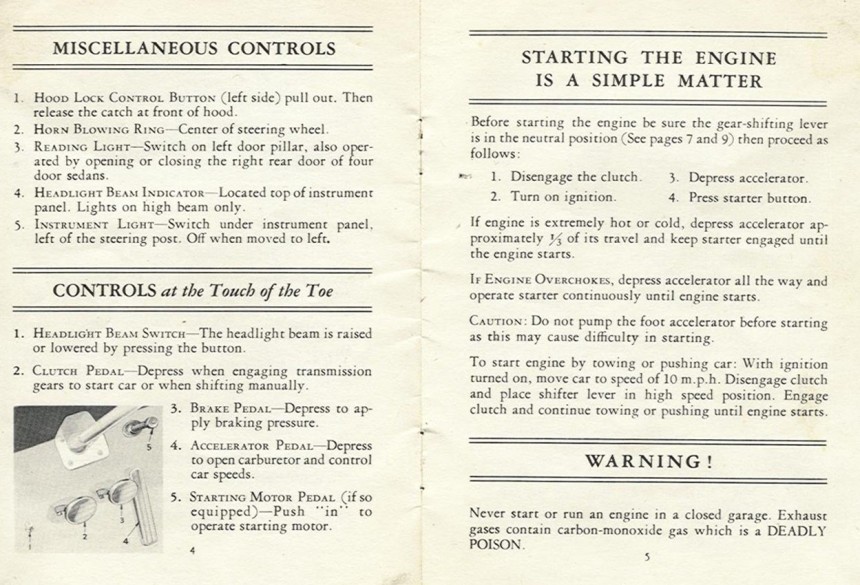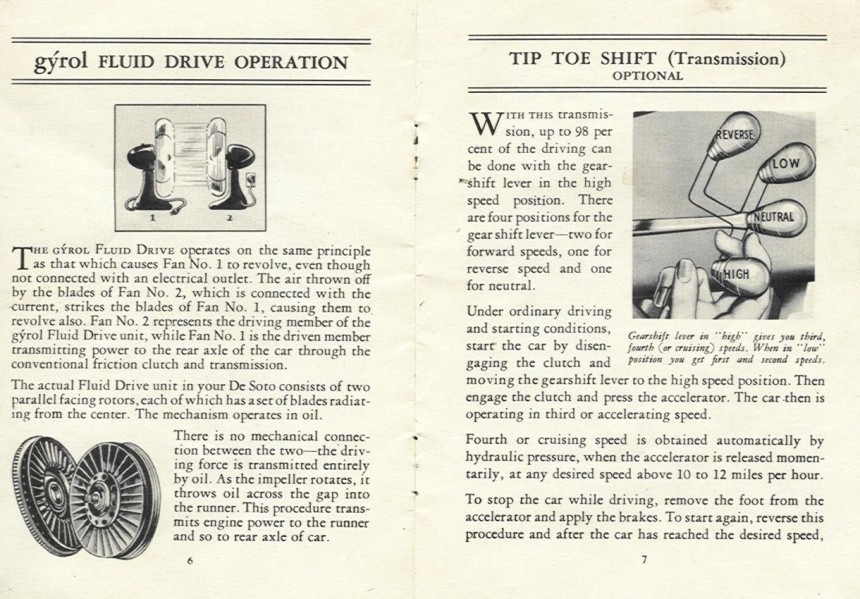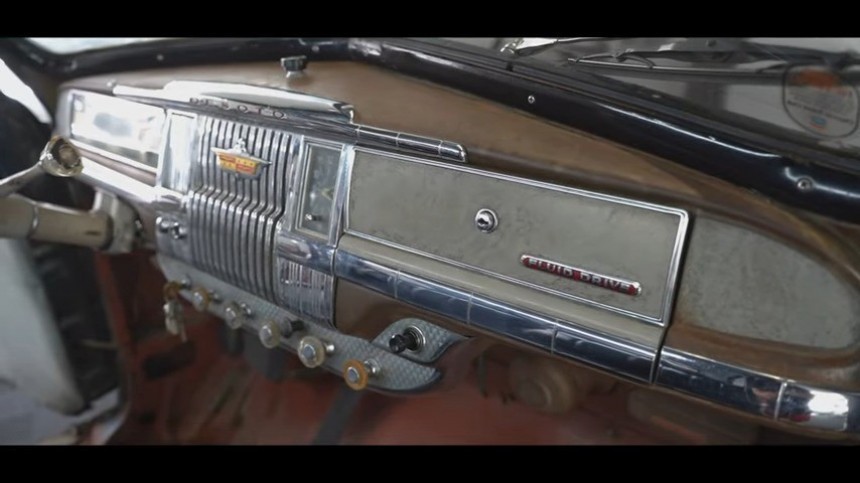After the ashes of the Second World War vanished away into history, blown by the winds of time, America got back to the automobile-making business for the civilian market. Between 1942 and 1946, the nation’s war effort halted regular production, and drastic measures were taken to cut down raw materials supply for the domestic market.
The United States of Automobile soon put all that behind after the September 2, 1945, surrender of Japan and the formal ending of the war. Carmakers set to work, taking prewar designs and rushing them onto the assembly lines to fulfill the quenching thirst of demanding customers.
Things didn’t change much for the 1947 model year – except for a few minor touches here and there, the new cars were tributaries of the 30s models. That’s why it’s not so easy to recognize a 1940 model from a 1947; it takes a closer look and minute inspection to tell which is which.
Take the car in the video as an example; it’s a 1947 Desoto Custom Club Coupe, but the shape is unmistakably old. Not in a scorning way – as in out-of-fashion or outdated; it’s just that the overall styling cues can be traced back to the mid-30s, in the Chrysler Airflow (the first automobile to be sculpted by wind tunnel imperatives).
One immediately striking feature of this Desoto is its sheer size. Despite being a two-door coupe, the car is massive in all directions. We now have SUVs smaller than this “small” car from the late 40s. I’m not forcing an ‘apple vs. oranges’ comparison, but look at it! A Cadillac Escalade would think twice before taking the size dispute to this Desoto.
Getting down to numbers, the Desoto is a lot of car: 5.26 meters in length (207.3 inches), 1.92 meters wide (75.7 inches), 1.7 meters tall (67.3 inches), with a wheelbase of 3.08 meters (121.5 inches). As for weight, it tips the scales at 1,610 kg (3,550 lbs).
All that space is reserved for the enormous hood under which a Spitfire flax-six resides, the six-passenger cabin, and the reasonably generous trunk. The engine bay and front clip take up about 40% of the car’s length, so this Desoto commands respect for its presence.
The car has a story to tell – and the YouTubing detailers at WD Detailing give us a glimpse of what this fine automobile once was. Bought new by a wrench-yielding woman born in an age when people knew how to fix and mend things by themselves, the car became her life-long prized possession. Years passed, and the car was passed down to the woman’s grandson.
Notably, the lady did all the maintenance work on her Desoto (including engine repairs and body fixes – sheet metal and paint). The owner’s manual – found in this story's photo gallery – is a compelling instrument from when a car needed a lot more TLC than today’s tablets-with-windshield-wipers. Please read the document; it’s a nice piece of automotive history that opens our eyes to what caring for a car was like eight decades ago.
That’s why cars weren’t simply expendable goods that one uses for a while and then throws away in a consumerist-infused manner. A car became part of the family because it needed constant care and attention to run correctly.
That’s not what the inheriting grandson thought about his heirloom Desoto – soon after assuming ownership, he put the car up for sale. The old-timer sat in a warehouse for the past 15 years, collecting dust and remembering stories from its 300,000-mile-long road experience.
Alright, this got me thinking, too, but the vloggers say this is what the title says: 300,000 miles (480,000 km) on an engine from 1947. The valve-in-block was less efficient and powerful than GM's and Ford's new overhead-valve designs. Still, it did deliver peak power at lower RPMs, meaning it wouldn’t endure as much stress, thus lasting longer.
Nonetheless, that mileage is pretty darn impressive on a 76-year-old engine – if it is the original 237 cubic-inch/3.8-liter inline-six plant. The 109-hp, 192 lb-ft (260 Nm) output was sent to the rear wheels via a gyrol Fluid Drive coupling (optional equipment fitted to our main character) for the four-speed ‘Tip Toe’ shifting gearbox or the standard three-speed manual. Both transmissions had the shift lever installed on the steering column (again, see the manual in the gallery for details on how each operated).
The TipToe Shifting gearbox with the old-fashioned torque converter wasn’t an automatic in the modern sense of the word, but it allowed simpler operating. After starting the engine, the driver needed to engage and disengage the clutch, but the car shifted by itself once on the move.
Also, if we refer to present-day automobiles, learn that the 1947 Desoto came with a 'Start' button on the dashboard. Alternatively, a starting pedal could be optioned at extra cost – making for a peculiar four-pedal design.
One main disadvantage of the fluid coupling was the need for a wheel block since the gearbox did not have a mechanical linkage to the engine. The parking brake was paramount because the transmission could not hold the car on a ramp and prevent rolling.
Chrysler claimed the bodies of the Desotos were rust-proofed (take that in the 1940s general acceptance of automotive standards). Still, this age-braving example holds its own remarkably well. After the detailed cleansing operation, the coupe shines in all its magnificence.
For the 1947 model year, Chrysler built 73,798 automobiles under the Desoto brand, segmented into two trim levels – the Deluxe and Custom. Nearly half of the production was accounted for by the two-door coupe. One of those veterans endured through the ages to the driverless age of Artificially Intelligent automobiles that could become fully self-driving and self-maintaining. Dare we think of self-awareness in a Terminator scenario for the automotive realm?
Things didn’t change much for the 1947 model year – except for a few minor touches here and there, the new cars were tributaries of the 30s models. That’s why it’s not so easy to recognize a 1940 model from a 1947; it takes a closer look and minute inspection to tell which is which.
Take the car in the video as an example; it’s a 1947 Desoto Custom Club Coupe, but the shape is unmistakably old. Not in a scorning way – as in out-of-fashion or outdated; it’s just that the overall styling cues can be traced back to the mid-30s, in the Chrysler Airflow (the first automobile to be sculpted by wind tunnel imperatives).
Getting down to numbers, the Desoto is a lot of car: 5.26 meters in length (207.3 inches), 1.92 meters wide (75.7 inches), 1.7 meters tall (67.3 inches), with a wheelbase of 3.08 meters (121.5 inches). As for weight, it tips the scales at 1,610 kg (3,550 lbs).
All that space is reserved for the enormous hood under which a Spitfire flax-six resides, the six-passenger cabin, and the reasonably generous trunk. The engine bay and front clip take up about 40% of the car’s length, so this Desoto commands respect for its presence.
Notably, the lady did all the maintenance work on her Desoto (including engine repairs and body fixes – sheet metal and paint). The owner’s manual – found in this story's photo gallery – is a compelling instrument from when a car needed a lot more TLC than today’s tablets-with-windshield-wipers. Please read the document; it’s a nice piece of automotive history that opens our eyes to what caring for a car was like eight decades ago.
That’s why cars weren’t simply expendable goods that one uses for a while and then throws away in a consumerist-infused manner. A car became part of the family because it needed constant care and attention to run correctly.
Alright, this got me thinking, too, but the vloggers say this is what the title says: 300,000 miles (480,000 km) on an engine from 1947. The valve-in-block was less efficient and powerful than GM's and Ford's new overhead-valve designs. Still, it did deliver peak power at lower RPMs, meaning it wouldn’t endure as much stress, thus lasting longer.
Nonetheless, that mileage is pretty darn impressive on a 76-year-old engine – if it is the original 237 cubic-inch/3.8-liter inline-six plant. The 109-hp, 192 lb-ft (260 Nm) output was sent to the rear wheels via a gyrol Fluid Drive coupling (optional equipment fitted to our main character) for the four-speed ‘Tip Toe’ shifting gearbox or the standard three-speed manual. Both transmissions had the shift lever installed on the steering column (again, see the manual in the gallery for details on how each operated).
Also, if we refer to present-day automobiles, learn that the 1947 Desoto came with a 'Start' button on the dashboard. Alternatively, a starting pedal could be optioned at extra cost – making for a peculiar four-pedal design.
One main disadvantage of the fluid coupling was the need for a wheel block since the gearbox did not have a mechanical linkage to the engine. The parking brake was paramount because the transmission could not hold the car on a ramp and prevent rolling.
For the 1947 model year, Chrysler built 73,798 automobiles under the Desoto brand, segmented into two trim levels – the Deluxe and Custom. Nearly half of the production was accounted for by the two-door coupe. One of those veterans endured through the ages to the driverless age of Artificially Intelligent automobiles that could become fully self-driving and self-maintaining. Dare we think of self-awareness in a Terminator scenario for the automotive realm?
